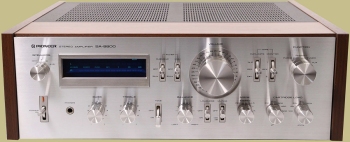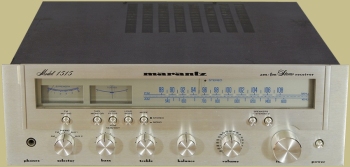
The Marantz 1060 is an iconic integrated amplifier. Introduced in 1973, following Marantz’s sale to Superscope, this classic component quickly established itself in the high-fidelity market. It allegedly sold over 225,000 units at an initial retail price of around $199.95.
Despite its modest 30 watts per channel output, the 1060 delivers impressive performance when needed. Its modular design allows separate use of the preamplifier – regarded for its quality, particularly the phono stage—or the power amplifier section. The 1060’s combination of versatility, performance, and reasonable pricing made it enormously popular during its production run from 1973 to 1977. While slightly smaller than today’s standard 17-inch components, its aesthetic appeal and functionality make it very popular among vintage audio enthusiasts.
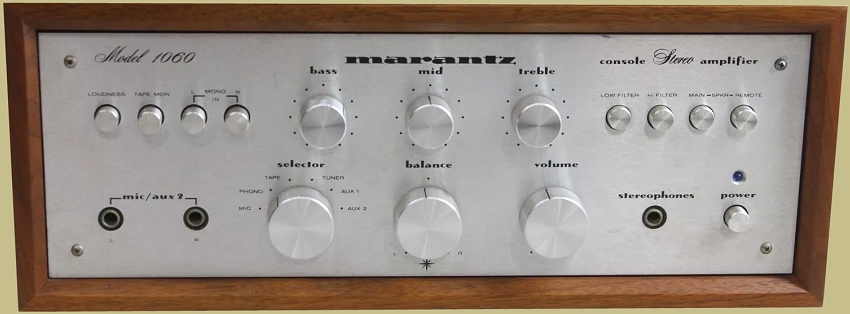
Front Panel
The Marantz 1060’s elegant front panel features a logical arrangement of controls on its satin-gold face. At the lower center are three large knobs controlling BALANCE, VOLUME, and input SELECTION. The input selector has multiple options including PHONO, TAPE, TUNER, AUX 1, and AUX 2, with dedicated MIC inputs available. An interesting design feature allows the front-panel microphone jacks to double as AUX 2 inputs, with sensitivity adjustable via the selector switch.
The upper section has an advanced tone control system with three separate knobs—BASS, TREBLE, and, unique for the time, a MID-range control. Each offers precise sound shaping with five detented positions for boost and cut, plus a center “flat” position for neutral response.

Flanking these central controls are a number of pushbuttons. To the left, four buttons provide loudness compensation, tape monitoring capability, and mono options. The mono functionality is very handy, allowing users to route either left or right channel to both outputs individually, or combine both input channels when both buttons are engaged.
The right side houses four additional pushbuttons controlling low and high cut filters and independent activation of two pairs of speaker outputs. A headphone jack and the power switch are located at the lower right corner of the panel.
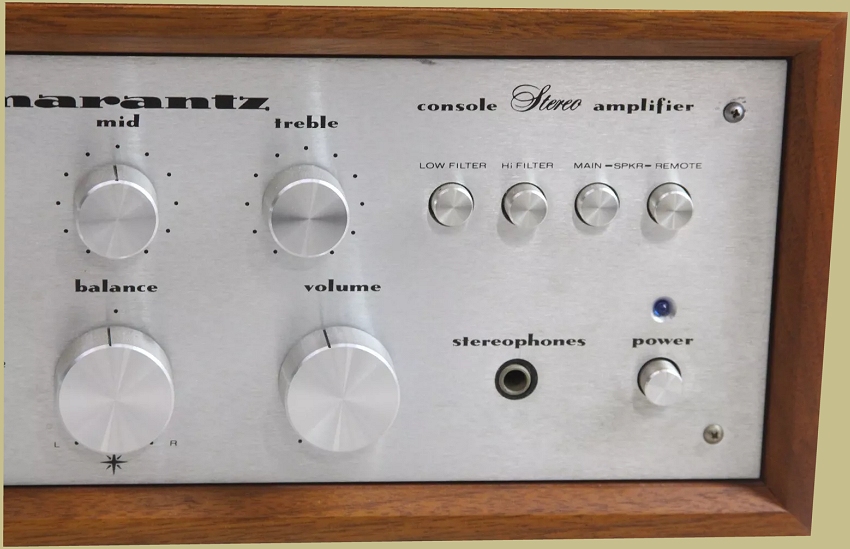
Amplifier
The Marantz 1060 features a versatile modular architecture that allows independent operation of either the preamplifier or power amplifier sections. The preamp performance is exceptional by vintage standards, with a particularly outstanding phono stage that delivers excellent audio quality.
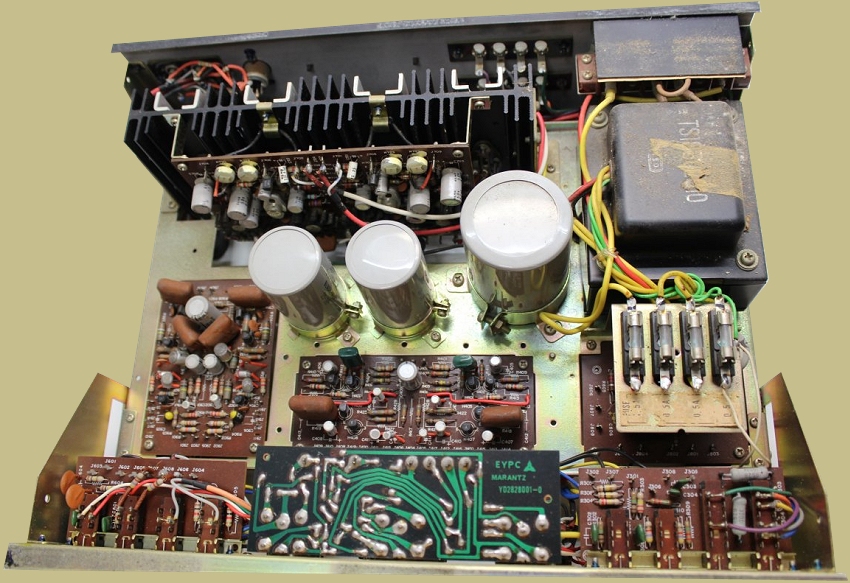
The Marantz 1060 employs a capacitor-coupled amplifier design, a technology common in early transistor amplifiers but largely superseded by direct coupling configurations by the mid-1970s. This design approach differentiates it from its larger counterpart, the Marantz 1120 amplifier, which adopted the newer direct-coupled architecture. The 1060 delivers a respectable 30 watts per channel into 8-ohm loads.
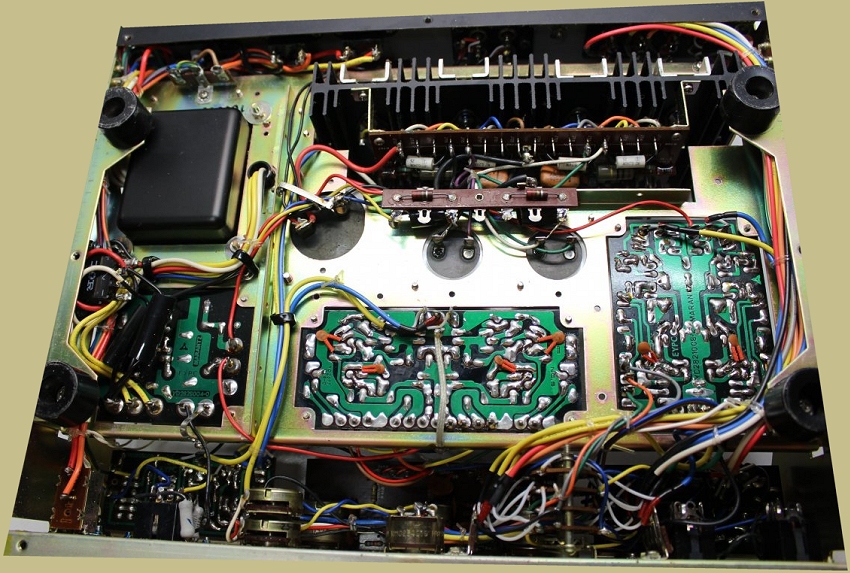
A quirky characteristic of a capacitor-coupled design is the audible speaker “thump” when powering up the unit. To minimize this effect, you can power on the amplifier and wait 10-15 seconds before engaging the speaker switches.
Some potential maintenance considerations include the noise-susceptible 2SC458 and 2SC1000 transistors used in the circuit. There are modern replacements for these transistors so it’s not a big problem. In fact, rebuild kits are readily available on eBay.
Phono Stage
The phono section of the Marantz 1060 has earned a legendary reputation among audio enthusiasts. Its exceptional performance stems from a meticulously designed RIAA equalization curve. It is easily one of the most highly regarded phono preamplifiers of its era.
Here is a version of the Marantz 1060 with a black faceplate.
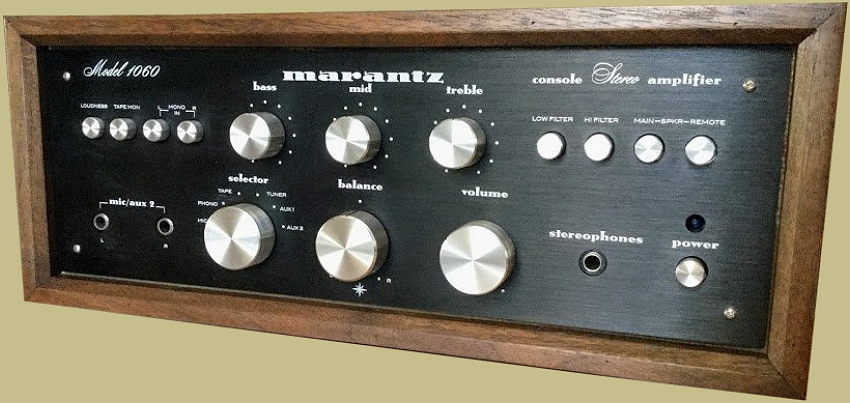
Specifications
- Power output: 30 watts per channel into 8Ω (stereo)
- Frequency response: 20Hz to 20kHz
- Total harmonic distortion: 0.5%
- Damping factor: 45
- Input sensitivity: 1.8mV (MM)
- Weight: 18lbs
- Year: 1971
Here is a audio ad showing the 1060 as well as a number of its competitors at the time.
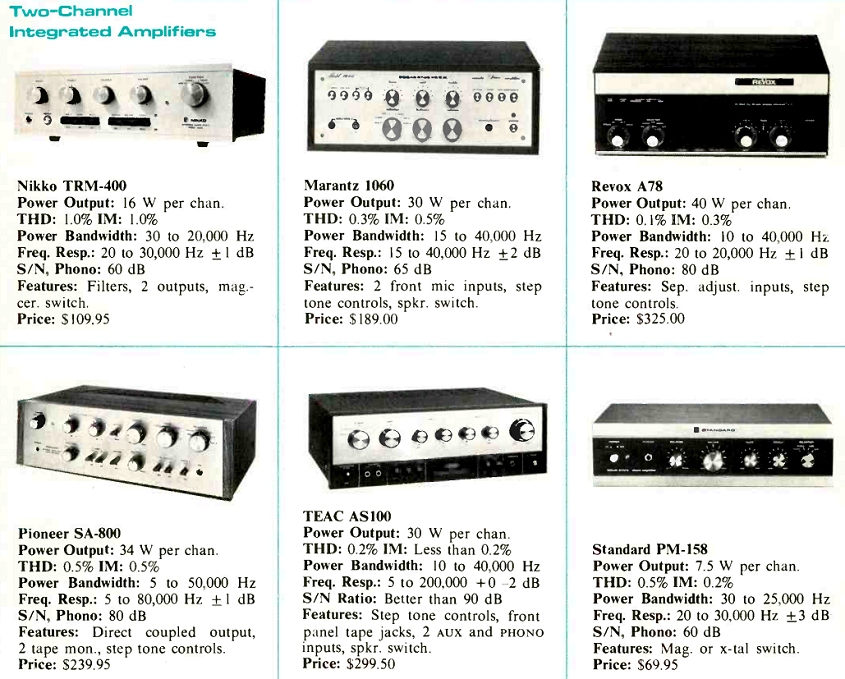
Reviews
• “It has the right balance of clarity and smoothness. Very hard to beat in a small or medium sized room.”
• “This amplifier is a real gem. If you come across one, snag it!”
• “Amazing amp. Sound is sweet, bass is powerful, mids are clean and highs are extended.”
• “One of the best sounding amplifiers ever made.”
• “The 1060 is great, and has the trademark Marantz warmth.”
• “I have had my Marantz 1060 since 1973. It is still in use and sounds fantastic. I will never sell it.”
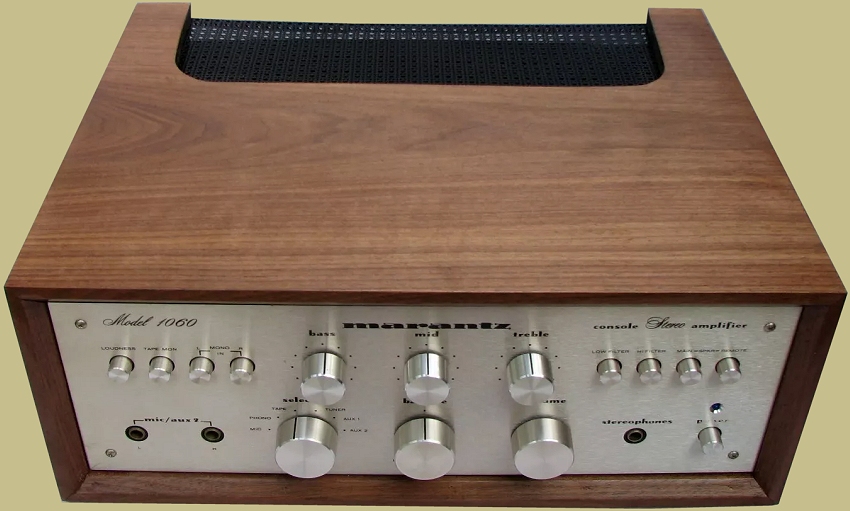
Rear Panel
The Marantz 1060’s rear panel offers an array of connectivity options.
DIN Tape Recorder Jack (REC/PLAY):
- 5-pin DIN jack on the rear panel for European-type 5-wire tape recorder cables.
- Connected in parallel with TAPE IN and TAPE OUT jacks, ensuring proper phasing.
TAPE OUT Jack:
- Signals routed to the tape recorder, affected only by the front panel selector switch.

TAPE IN Jack:
- Connect tape recorder pre-amp outputs to play through the system when the recorder is in playback mode and TAPE MON switch is in the IN position.
AUX 1 Jack:
- High-level jacks for connecting various sources like tape players, phono cartridges with RIAA equalized output, or additional tuners.
TUNER Jack:
- High-level jacks for connecting stereo or mono tuners to the Model 1060.
- Stereo FM Tuner: Connect audio cables between tuner outputs and Model 1060 jacks. Set selector switch to TUNER.
- Monophonic FM/AM Tuner: Connect one cable to either left or right TUNER jack. Set selector switch to TUNER and depress both MONO IN (L,R) switches.
PHONO Jack:
- For standard phono cartridges requiring a 47,000-ohm resistive load.
- If hum is heard, ensure proper grounding and shielding. Connect a ground wire from the turntable to the CHASSIS GROUND binding post.

TAPE Jacks:
- Connect an extra tape recorder. For playback, set the front panel selector switch to TAPE. Not affected by the TAPE MON switch.
PRE OUT Jack:
- Deliver the preamplifier output to the rear panel.
MAIN IN Jack:
- Input terminals for the power amplifier section.
Note:
- PRE OUT and MAIN IN jacks are normally bridged by RCA pin plugs. Remove these to connect equipment like graphic equalizers or compressors.
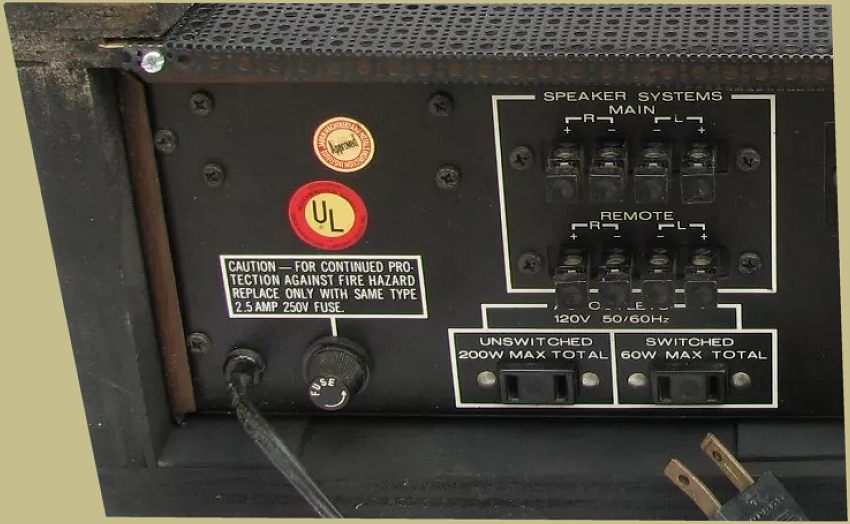
Chassis Ground:
- Provides an “earth” ground point to eliminate ground loops.
Convenience Outlets:
- Two AC outlets on the rear panel for powering associated components. The right outlet is controlled by the front panel POWER switch; the left outlet is unswitched.
Speaker Connections:
- The 1060 employs user-friendly insulated spring-loaded binding posts, eliminating the need for tools when making connections. The amplifier can handle between 4 and 16 ohm speakers.
Here is the 1060 paired with a Marantz Model 104 tuner.
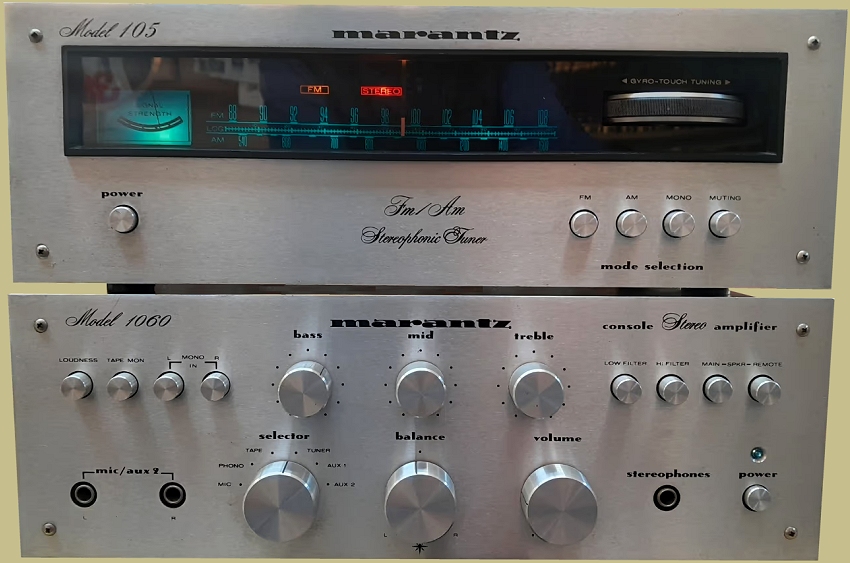
Conclusion
The Marantz 1060 delivers exceptional performance with ample power for most home audio systems. Its technical excellence is matched by its flexibility in operation. With its well designed layout, compact form factor, and outstanding sonic performance, the Marantz 1060 is an exceptional value. Given the amount of these amplifiers that were sold they are still easy to find at a reasonable price. They are also easy to work on and parts are readily available. If you’re looking for a good amp or preamp for a turntable setup or even headphone then the Marantz 1060 is an excellent choice. For those that need a little more power then perhaps the Marantz 1090 or 1120 would work well.
